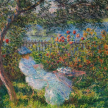How Orange Juice Conquered the Breakfast table
From Citrus Crisis to Breakfast Bliss: Innovation and Necessity Shape a Staple Beverage

As the waiter approaches, poised to take your breakfast orders, he poses the timeless question, "Tea, coffee, or orange juice?"
The ubiquitous sweet and tangy refreshment, freshly squeezed from the finest oranges (though, let's be honest, more likely from a juice box), is found everywhere, from our homes to bustling hotels, airplanes, charming cafes, and restaurants. While there are other options for fruit juices, it seems orange juice reigns supreme as a symbol of morning refreshment.
But have you ever wondered how this tradition began? It's all thanks to the art of clever marketing and an invention born out of necessity
It all goes back to the early 1900s, when the California Fruit Growers Exchange found themselves in a bit of a citrus dilemma. Orange production soared to such heights that they had to resort to chopping down orange trees! Why? Well, the average orange serving at the time was half an orange, and the fruit was being sold at a loss. Now they had two options: to reduce the supply or create demand.
Enter Albert Lasker, the advertising expert from Lord & Thomas. Tasked with saving the day, Lasker’s first stroke of genius? Rebranding California Fruit Growers Exchange as 'Sunkist'—a catchy name that would appeal to the masses. But Lasker knew that simply advertising oranges wouldn't cut it. He needed to come up with a more imaginative approach and tap into unexplored territories of the orange industry to up his marketing game.
Lasker figured that a glass of orange juice per person required 2–3 oranges. This was four to six times more oranges per head than before! Further insight from Francisco, a diligent fruit examiner at Sunkist, shed light on something we can all relate to: the soda-fountain workers loathed juicing oranges because, let's face it, it was (and still is) messy and time-consuming! Thus, stores priced orange juice high to reduce its demand. Taking this into account, Lasker deduced that extracting orange juice at home would be an equally difficult task. This is when he hit the jackpot. What if we got people to consume 2-3 oranges instead of half of one?
Francisco then collaborated closely with manufacturers and spearheaded the development of a robust electric juice extractor customized for soda fountains. This innovation not only aimed to streamline the tasks of soda-fountain workers but also to reassure consumers that the orange juice came from real fruit, enticing more orange juice customers. Concurrently, a glass orange juice extractor was crafted for home use. Retailers packaged these extractors with Sunkist oranges, presenting them at an irresistible price of just a dime each, marking the dawn of a new era in accessible and convenient home juicing.

Lord and Thomas jumped at this opportunity and created the iconic campaign ‘Drink an Orange’. This concept originated from Claude Hopkins, an accomplished advertiser renowned for his contributions in marketing, while working at Lord & Thomas. This ad, touting miraculous medicinal benefits, successfully persuaded the American public that consuming orange juice would enhance their health. Besides, the early 20th century was also the time of vitamin c discovery. Of course, marketing firms took advantage of medicinal discoveries like this to promote orange juice aggressively.
Fast forward to World War II, where soldiers battled not only enemies but also scurvy, a severe form of vitamin C deficiency. With fresh fruit out of reach, the troops relied on canned orange juice and canned grapefruit juice, a less-than-popular alternative known for its lackluster taste. Being largely a grapefruit industry, it was during this tumultuous time that Florida Natural from Florida trumped California in the orange production race. Just as the war reached its end, Florida Natural found a new way to preserve orange juice: freezing orange juice concentrate. Hailed by war veterans, this would eventually be embraced by breakfast tables across the nation. As American culture went mainstream, it set the stage for other countries to follow suit, embracing orange juice as a breakfast staple

So, the next time you sip on orange juice, reflect on its remarkable journey. From Lasker's marketing genius to Francisco's innovative extractor and its pivotal role in wartime nutrition, it's a testament to the transformative power of creativity and necessity. It serves as a reminder that the simple pleasures we enjoy today were once indispensable, shaping the lives of past generations.
About the Creator
Alina Irfan
Get ready for a ride filled with book recs, historical tidbits, and offbeat questions! Wonder why detectives sport trench coats? Or the mysteries of Victorian beauty? Fasten your (trench coat) belts and join the ride—it's gonna be wild!
Reader insights
Nice work
Very well written. Keep up the good work!
Top insight
Easy to read and follow
Well-structured & engaging content






Comments (2)
GOOD INTERESTING
Wow, the life of the orange. Fabulous journey into one of my favorite fruits.